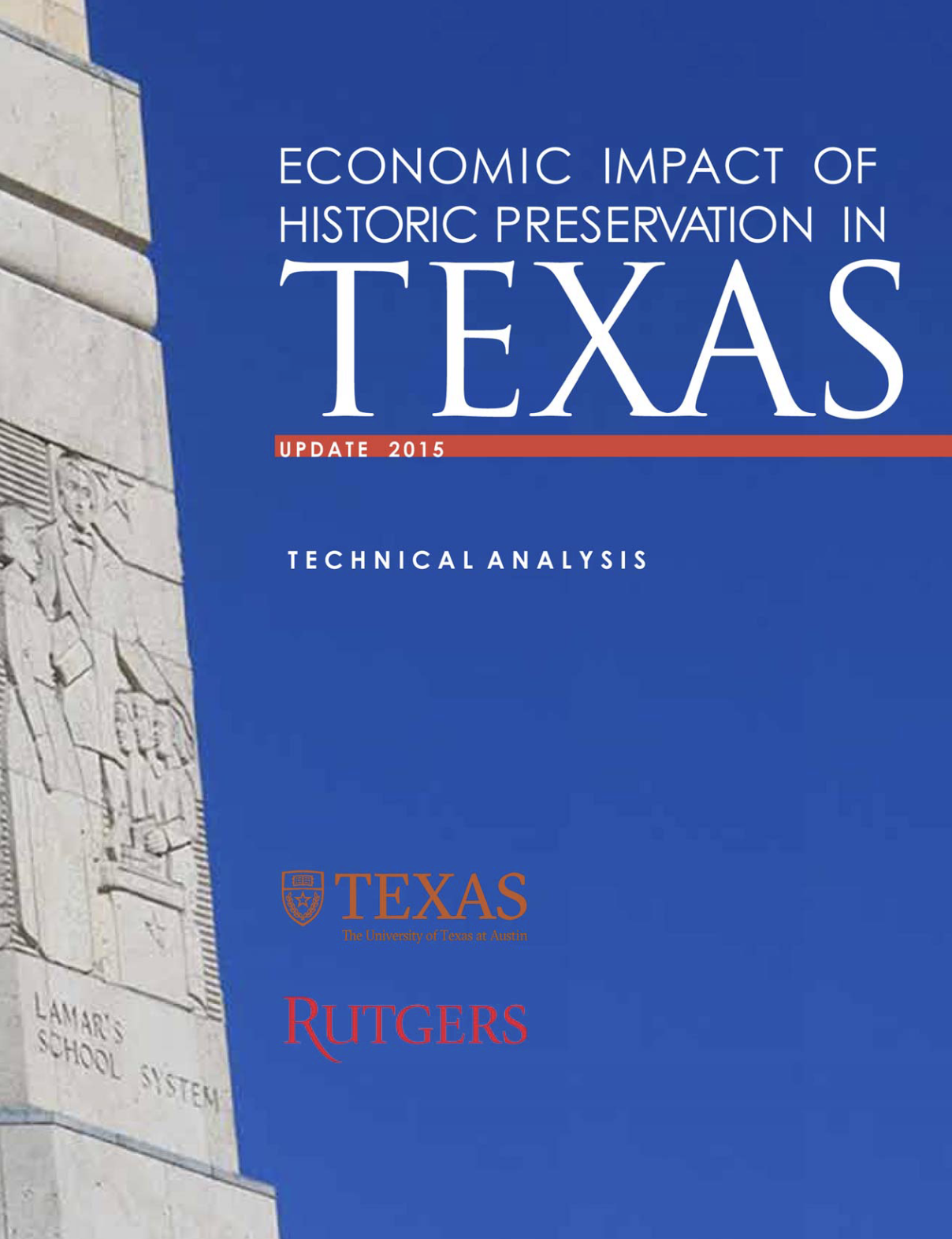Texans are proud of the state’s rich and diverse heritage and are committed to the continued economic growth that is a vital part of that heritage. Historic preservation is not an alternative to economic growth but a key component of it.
The Texas Historical Commission (THC) in 1999 commissioned a study (a collaboration between Rutgers University and UT-Austin) that quantified the economic contributions of historic preservation in Texas. The 1999 study became one of the earliest and most comprehensive research efforts on this topic in the United States. This 20151 study updates the economic impact investigation, and expands it to include programs launched since 1999. Once again, UT-Austin and Rutgers University collaborate on this 2015 study.
The 2015 study includes quantitative economic impact investigation (detailed shortly) as well as qualitative case studies and other research. This technical report focuses on the quantitative economic impact analysis. This research focuses on applying an advanced economic analysis tool, the Preservation Economic Impact Model (PEIM), developed by Rutgers to quantify the total impacts of historic preservation, encompassing both direct and secondary economic effects. (Full details on the economic models are found at Appendix B.) To illustrate: lumber purchased at a hardware store for historic rehabilitation is a direct impact. Secondary impacts include purchases by the mill that produced the lumber and the household expenditures of the workers at both the mill and the hardware store.
Economists estimate direct and secondary impacts, which sum to total impacts using an input- output (I-O) model. The PEIM is a sophisticated I-O model specifically tailored to be applied in historic preservation applications. The results of the PEIM include many fields of data. The fields most relevant to this study are the following:
- JOBS: Employment, both part- and full-time, by place of work, estimated using the typical job characteristics of each industry.
- INCOME: “Earned” or labor income; specifically, wages, salaries, and proprietor income.
- WEALTH: Value-added—the sub-national equivalent of gross domestic product (GDP).
- OUTPUT: The value of shipments, as reported in the Economic Census.2
- TAXES: Tax revenues generated by the activity, which include taxes to the federal government and to state and local governments.3
